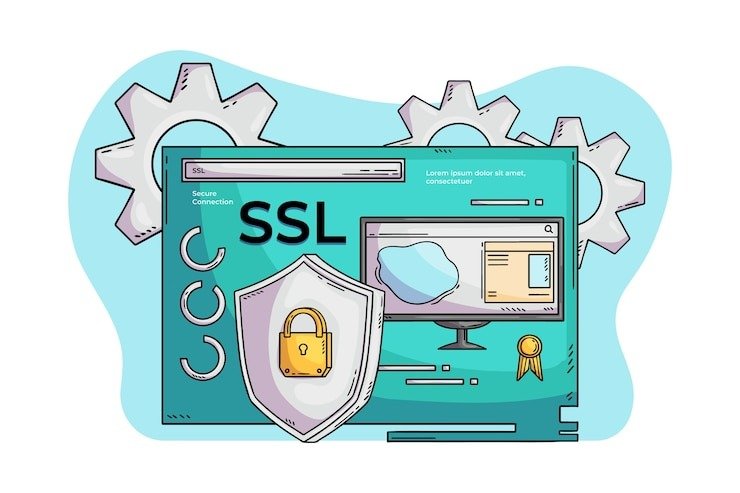Headers Security means special commands that are sent from sites to browsers to ensure the safety of the sites. These instructions which bear the names “HTTP headers” instructs the browser on how to handle such things as security, privacy, and content protection. For instance, they can prevent hackers from hacking your website or obtaining information.
Why is Headers Security Important for Websites?
Headers Security is significant because it assists in shielding websites from such threats such as hackers, malware as well as other bad things. Without these security headers, the sites are vulnerable to attacks. For example, they may block such types of attacks as “clickjacking” or “cross-site-scripting”, which will be dangerous for visitors.
Using proper headers, sites can protect data, prevent undesired access, ensure visitors’ trust in a site. It’s kinda like locking your doors and windows to protect your home, but for your website! Good headers ensure that only authorized people and programs can reach out to sensitive information. Absent them, it is possible that your website stays at risk of attacks and this means your data and your visitors are in danger.
What Are the Most Common HTTP Headers Security?

- HTTP security headers are rules that websites use in order to stay secured. Some common ones are:
- Strict-Transport-Security (HSTS) – instructs the browser to always use the secure connection (HTTPS) in order to reach the website.
- Content-Security-Policy (CSP) – This is used to stop vicious scripts being able to run on a website preventing attacks such as attempts at hacking.
- X-Content-Type-Options – Prevents browsers from guessing what type of files are contained in the website. This allows to block attacks based on a mischievous exploitation of wrong file types.
- X-Frame-Options – Protects the website against inclusion in other sites that can be used to make the users click dangerous stuff.
What is the Role of the Strict-Transport-Security Header?
The Strict-Transport-Security header ensures that the browser can only access your website through the HTTPS which is a safe connection. This will help to secure your website from hackers who may want to listen and change what you send and receive.
What is the Purpose of the Content-Security-Policy Header?
The Content-Security-Policy header instructs the browser of what scripts, images, or other content will be allowed on your site. This prevents hackers from executing malicious codes.
How Does the X-Content-Type-Options Header Enhance Security?
The X-Content-Type-Options header forces the browser to disallow guessing of the content type, which makes it difficult for a hacker to upload malicious files into your site.
What is the Role of HTTP Headers Security?
The HTTP security headers are the rules that the websites send to browsers in order for the site to be safer. They are used to protect the websites from hackers and other evil individuals who can wish to do something unpleasant to the site or even steal information. These headers perform their work in the background and ensure that everything in the site is secure.
For instance, the Strict-Transport-Security (HSTS) header ensures that the website is only accessed through a secure connection so that the hackers cannot look at or modify what is sent from the browser to the website. The content-security-policy (CSP) header is used to prevent malicious scripts from running on the site. This deters hackers from inserting evils in the form of code.
Other headers such as X-Content-Type-Options will prevent browsers from guessing the types of files that they are viewing, which will secure the site from harmful attacks. The X-Frame-Options allows only your site to be displayed without being embedded in another website’s pages, which can be dangerous.
In other words, a Headers Security is equivalent to putting locks on your doors in order to protect your website as well as its visitors from attacks. Such websites are easily hacked without such headers as it is more vulnerable without them.
How to Implement HTTP Headers Security

Setting up Headers Security on your website is similar to locking doors so that your website will remain secure from unknown users or cyber attackers. That is how you can go about it:
Installation of Setup in Apache or Nginx.
For the sake of Apache, you can include the security headers in your .htaccess file.
For Nginx, include them in the server block under configuration file (nginx.conf). You can protect your site using such headers as Strict-Transport-Security or Content-Security-Policy.
Make sure your site has the appropriate headers:
To do the test, you can use such tools as SecurityHeaders.io or SSL labs for checking your website.
These tools will tell you if your headers are correct or not and what you need to change.
Best Practices:
Always use HTTPS (secure connection) and use Strict-Transport-Security header.
Add Content-Security-Policy to prevent malicious content from running.
Use X-Content-Type-Options to prevent browser from guessing the file types.
Check your website with periodical security tools to be up to date.
Establishing the correct headers, you provide your site with more safety from hackers and ensure that the user’s data is secure.
What Are the Most Common Mistakes When Configuring HTTP Headers Security ?
When it comes to Headers Security, even small mistakes can open the door to hackers. Here are some common errors:
- Missing Headers – Many websites forget to add basic security headers like Strict-Transport-Security or Content-Security-Policy. Without them, the site becomes easier to attack.
- Wrong Settings – Some headers are added, but the settings are weak or incorrect. For example, setting Content-Security-Policy too loosely can still allow bad scripts to run.
- Not Using HTTPS – Headers like HSTS only work if your site uses HTTPS. If your site is still using HTTP, it’s not secure.
- Allowing Everything – A mistake many make is allowing all sources in headers (like * in CSP). This gives hackers a way in.
- No Regular Updates – Hackers find new tricks all the time. If you don’t update your headers, your site can stay open to old attacks.
In simple words, if Headers Security is done wrong or not used at all, it’s like leaving your house door open. Hackers can walk in and do damage. Always check and fix your headers to stay safe.
What is the X-XSS-Protection Header, and How Does it Help Prevent XSS Attacks?
X-XSS-Protection header is one of the methods of protecting the websites from a form of attack known as XSS (Cross-Site Scripting). In this strike, the hackers make attempts to poison the website by injecting malicious codes in it. This code can be used for stealing information or for doing evil things on your site. X-XSS-Protection header instructs the browser to either block or sanitize this harmful code such that the site would become safer for the client.
How Does the Referrer-Policy Headers Security Improve Privacy?

The Referrer-Policy header is concerned with privacy protection. However, your browser sends sometimes information on where you come from (referrer) when you visit a website. For instance, if you click a link from a website to another one, then the latter understands which page you were on previously. With the Referrer-Policy header this information is limited in the amount that is shared. If they change this header, websites can prevent their sharing of sensitive information, such as personal details, with other sites. This is one way of ensuring your browsing details remain private and secure.
To put it simply, both these headers aid in preventing the bad stuff from taking place on the websites and make your data safer.
Why You Should Regularly Update Your HTTP Headers Security
It is advisable that you constantly upgrade your HTTP security headers so that your website can be secure. Headers also need to be updated like the way you change your password often. Websites change, and new threats of security appear. Sometimes lack of interest of keeping headers up to date can lead block newest attacks and protect your visitors.
How Often Should You Update Your HTTP Security Headers?
It is best to check your headers at least once in a few months. Also, when you do big changes to your website, check your headers. This is updating your server, additions of the new features or a switch to HTTPS. Updates are performed on a regular basis in order to make your website safe from the new threats.
What Are the Security Risks of Not Updating Headers?
Failure to update your headers can give hackers an access to your site. Old headers may not prevent new attacks from happening, as hackers can use this to their advantage to steal information or render your website useless. It is similar to when you have fixed the door and leave it unlocked after. It is possibly secure at present however risks rise over the period. Always update your headers, to prevent such a threat.













